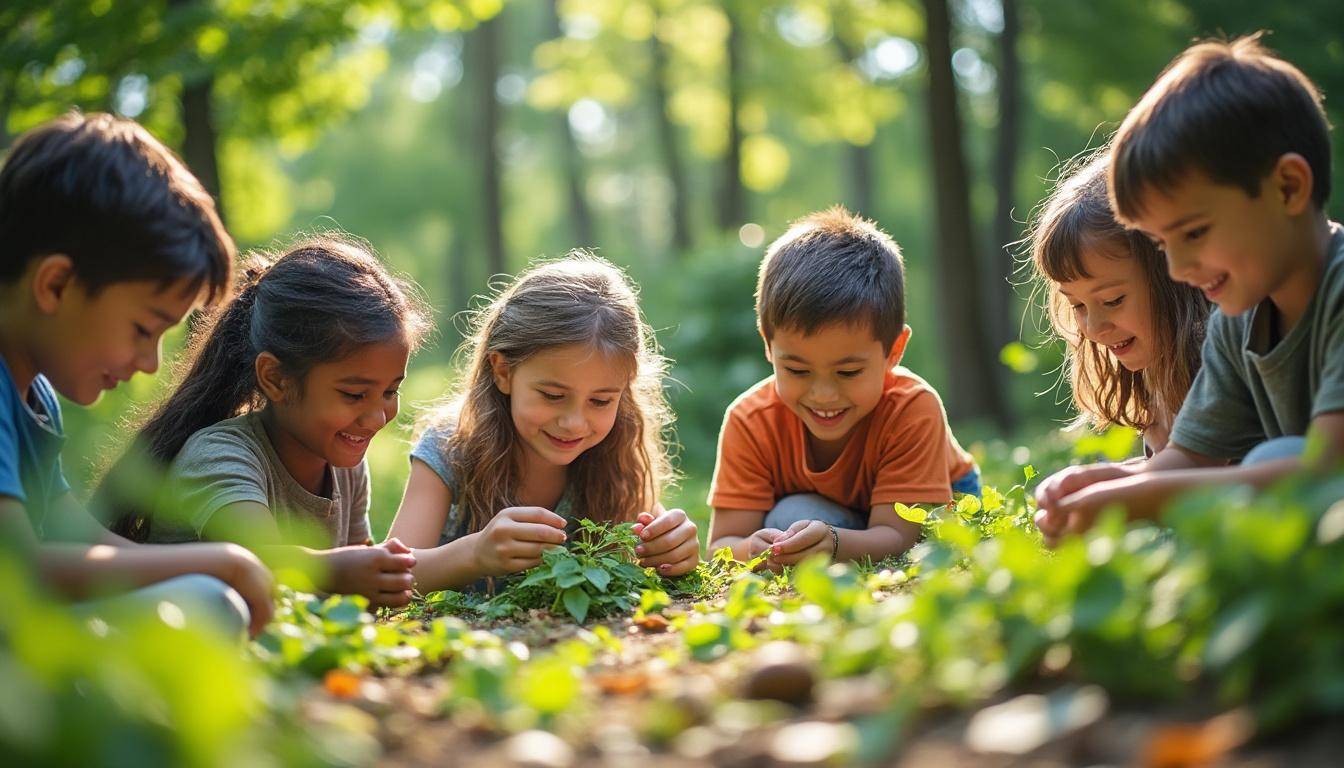The Transformative Effect of Nature-Based Learning on Children’s Mental Health
Recent research highlights the profound benefits that natural environments can have on the emotional well-being of children. A notable study conducted by researchers from McGill University, Université de Montréal’s Observatoire pour l’éducation et la santé des enfants (OPES), and led by Sylvana Côté, revealed that spending two hours per week in a natural outdoor space significantly reduces symptoms of anxiety, depression, aggressivity, and social challenges in children aged 10 to 12 who initially displayed the most severe mental health difficulties.
This intervention involved over 500 schoolchildren across Quebec, engaged in routine classwork conducted in parks or green spaces, combined with brief mental health activities such as mindful walking and creative exercises inspired by nature. Teachers observed that children became calmer, more attentive, and emotionally balanced after the program, highlighting the potential of nature as a therapeutic ally in education.
- Benefits include reduction of emotional distress for vulnerable children
- Improved classroom behavior and attention post-nature sessions
- Accessible and cost-effective approach leveraging existing green spaces near schools
- Inclusion of mindfulness and creative nature-based mental health activities
- Supports academic subjects while enhancing emotional resilience
How Nature-Based Programs Serve as Equalizers in Child Mental Health
As explained by Dr. Marie-Claude Geoffroy, associate professor at McGill University and Canada Research Chair in Youth Mental Health, the intervention particularly benefited children who presented higher levels of mental health symptoms at baseline. This suggests nature integration in school curriculums may help bridge disparities by providing targeted support for those children in greatest need.
The study encompassed a diverse socioeconomic sample across 33 elementary schools, ensuring inclusive insights representative of various community backgrounds. All participating schools were located within a kilometer of parks or green spaces, reinforcing the feasibility of this program in many school districts.
- Empirical evidence from randomized controlled trial supports causal beneficial effects
- Applicable across different socioeconomic environments
- Natural settings facilitate socialization and emotional regulation
- May reduce inequities in mental health access through school-based programs
- Encourages community engagement with local green initiatives such as Forest School Association and Children & Nature Network
Integrating Nature into Education: Practical Suggestions for Schools and Parents
Creating a supportive nature-based learning environment requires thoughtful integration of outdoor activities into regular coursework. The McGill-led study provided teachers with kits to conduct engaging mental health-promoting exercises aligned with science, mathematics, and languages during the nature sessions. This holistic approach maximizes educational value while nurturing emotional well-being.
- Incorporate 10-15 minute mindfulness or creative activities inspired by nature
- Use nature as a living classroom for subjects like biology, art, or poetry (haiku writing)
- Encourage schools to participate in Outdoor Classroom Day and leverage partnerships with organizations like Nature Valley and REI Co-op
- Advocate for policy support and funding inspired by research outcomes, as informed by recent legislative initiatives such as the Illinois education legislation
- Support families in fostering backyard explorations inspired by resources from Backyard Nature and National Geographic Kids
Broader Implications for Child Development Beyond Mental Health
Beyond alleviating anxiety and depression, interaction with natural environments promotes a spectrum of cognitive, social, and emotional skills. Emerging studies emphasize nature’s role in enhancing language development, communication, problem-solving, and resilience among children, thus fostering holistic growth.
For example, the Early Language Development at Home initiative connects linguistic progress with nature-based play, showing how natural settings enrich vocabulary and expressive skills.
- Nature nurtures attention restoration and cognitive functioning
- Natural settings encourage social interaction and empathy
- Fosters creativity through unstructured play and exploration
- Reduces stress and builds emotional resilience in children
- Supports career readiness by developing problem-solving and teamwork capabilities
Building a Sustainable Future: Community and Policy Engagement
To sustain these positive outcomes, collaboration among educators, parents, policymakers, and organizations dedicated to nature connection is essential. Groups like Wildlife Trusts, TimberNook, and the Forest School Association play pivotal roles in offering programs and advocacy to keep children connected to nature year-round.
Furthermore, emerging research points to tackling climate anxiety among youth by fostering a deeper bond with the environment, aligning with initiatives co-designed with teenagers and academic institutions.
- Encourage community programs that increase green space accessibility
- Promote policy frameworks supporting outdoor learning in school curriculum
- Engage youth in co-designing nature-based interventions for mental wellness
- Partner with conservation and educational organizations for resources and expertise
- Amplify messaging on the benefits of nature via platforms aligned with BrightPath’s long-term educational efforts


